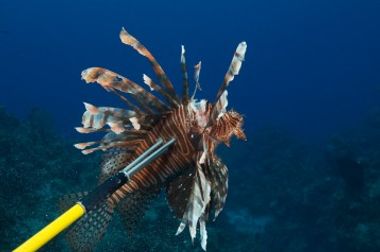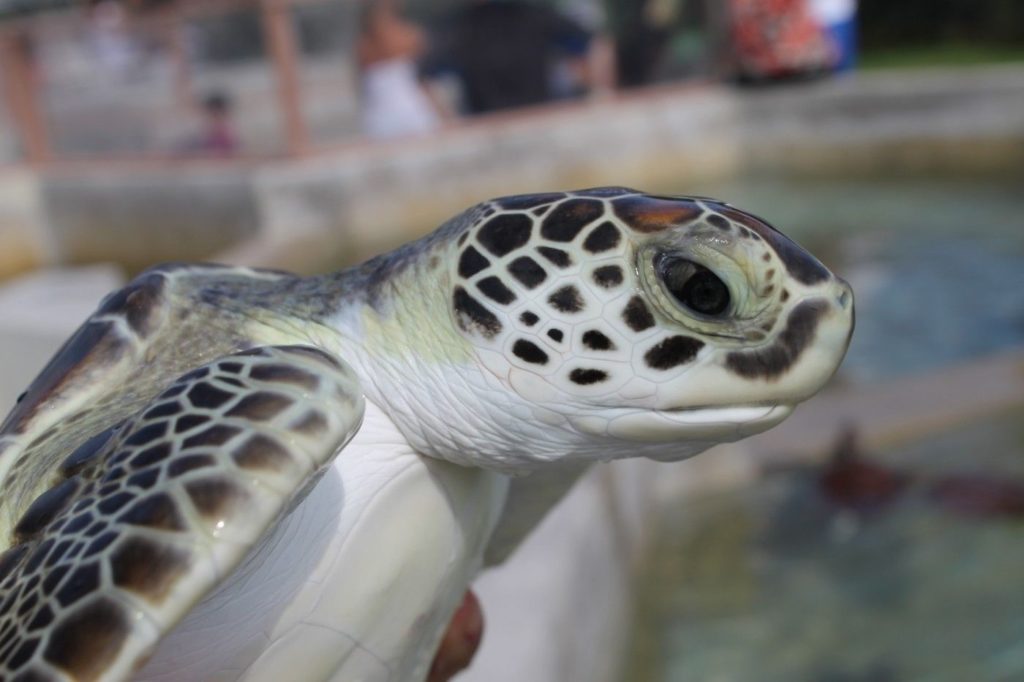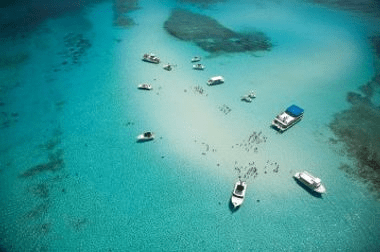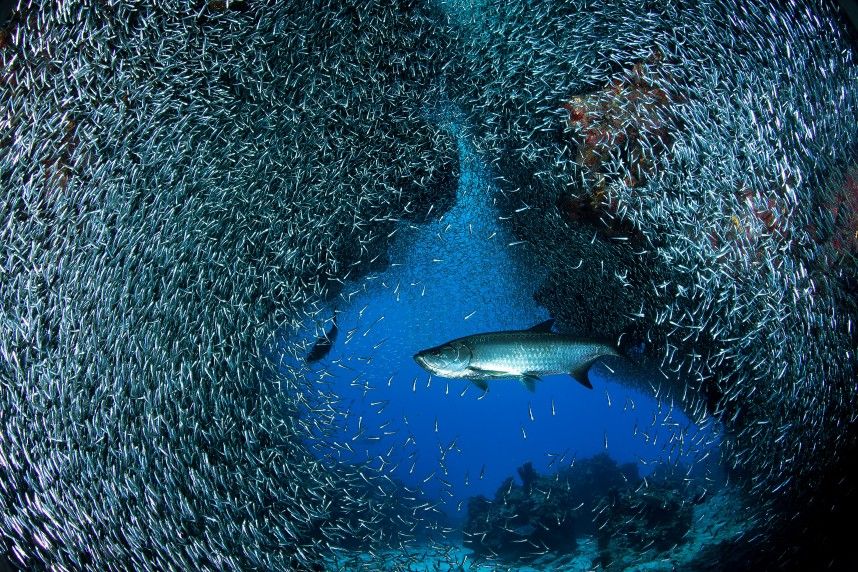It could sound like a movie headline of Sir Sean Connery, from Cayman Islands with love…., probably only for those who visit the Islands for one day, however, for the others, the majority that stays longer, it will realize that in fact is much more than this.
Let’s dive direct into it … in a nutshell …
It’s not hard to understand why the beaches on this part of the world are some of the finest and why there is something about Cayman Islands. That allures the wanderer human souls with the shallow, crystal clear water or its rather special coral reefs.
But day tourists or only the main Seven Mile Beach hugging visitors miss out on Cayman Brac and Little Cayman, Grand Cayman’s smaller island siblings.
Well, some say they might be tiny, but the diving spots and beaches here are just as good, certainly quieter and possibly a little more memorable.
But how much more? Well, for the beginning let’s meet …
The king of the Caribbean

The first thing that strikes you on a lionfish is of course its spines which contain venom, not poison.
Even though they are not usually life threatening to humans, the fishermen are removing them carefully.
They could cause more pain in comparison to a bee’s sting or maybe a scorpion’s. It should be mentioned from the beginning that they only have a defensive role.
As the way lionfish operates is by using its pectoral fins to direct prey towards the reef. In the end he likes to consume it entirely with one bite.
“After devastating Bahamas, they headed south towards us.” she says.
“Thousands of eggs are laid down, around 25,000 to be more precise in under 1 week and they do not have real predators in the area. They are like the kings of the reef.”
I am having a fruit punch on a terrace in the Cayman Islands, watching how the sun goes down, while Nancy tells me about this menace to local coral barriers of the mighty lion fish.
She is a full energy though, and together with her husband, is running a local diving company. Their whole environment depends on keeping somehow safe one of the best diving spots in the Caribbean.
Having their roots from distant Asian continent, these vivid color fishes first arrived in the States as “pets” in home fish bowls and were set free into the sea after becoming too big.
Genesis
They say everything began with 8 exemplars after 1980 when they released them somewhere in Florida.
“The first specimens were spotted around 2008 in Cayman Islands and divers began to be obtrusive in fighting against them,” says Nancy.
“Even though the local preservation laws are very powerful in protecting sea life, they were amended for lion fish. Licenses were issued to dive attendants and allowed them to have spears, to stab, not shoot.”
“The only real predators are humans and hopefully evolution will follow its course. Outside the diving sites, which are clean, you will still find them. Population could be kept in reasonable limits if some measures will be taken also on east border line of U.S.A.”
After a few days, while diving in the blue waters, I had my first encounter with a lionfish near a reef.
Spines like spears, red body with undulous white stripes, appearance covered in solitude and looking out of this world.
In the next remaining days I’ve found no other, so it’s a promising feeling of winning couple of battles, but not the war.
If you are around, pay a visit also to the turtles – they need you
In 1503 when Cristopher Columbus first time passed by, named the smaller 2 islands, Las Tortugas, because of the large numbers of turtles spread all over the waters of Cayman Islands.

Sadly, the blue waters were not beneficial for the turtles’ population, used massively as a local dish since Columbus sailors set foot on the islands.
This continued until modern times, making the numbers to decline to an alarming level. Still, a Farm was created to spawn the population and release adults in the seas.
Rapidly the place became a tourist attraction where you can meet these giant and humble creatures outside the water.
The guides are walking you through the turtle life span, from being a defenseless tiny creature to the calm giant adult of more than 200 kg.
But seeing a “pound” of turtles is not a pretty sight for everybody. This is contradiction with the spirit of these creatures that should be free in the wild.
Critics are debating the hygiene of the tanks where tourists engage the turtles. Or if the specimens released from captivity could thrive in the wild, with probably weaker genes and more opened to spread diseases.
Some numbers … with love
Above all these, not to mention with what costs. The Government spends USD 10 million to support the project, that means on average around USD 175 per local capita.
The numbers seem to be very easy for a skeptical resident met in a bar: “to break even, we need a double number of tourists and if most of them are coming from cruises lines, a new port must be built.
The subsidy could be better used on anti-poachers’ police and strengthening the conservation law”. In this way restoring the population by any means could be more beneficial than keeping turtles in the menus.
On the other side, the Farm claims that they have released 30,000 individuals in the waters and provided a constant source of food for restaurants, thus discouraging poachers.
Critics also advocate that it should not be in the human nature to keep an essentially solitary creature in mass pens.
There is something alluring about the Cayman Islands and Love

The main tourist attraction is Seven Mile Beach, having lined up a row of beach bars and multi-story hotels.
When a few cruise ships enter together into harbor, launching thousands of passengers, it is time to fade away. Where? To the quieter beaches of the two smaller islands of Little and Brac Cayman.
The common knowledge implies that the islands are tax free haven, yet there are few signs of opulence, people focusing and enjoying on a “less is more” attitude, most of them activating in the tourism area.
Shorts and flip-flops are the same costume for both rich and poor. During the day they dive, swim, snorkel or just sit and relax by the pool.
In the evening you can have a drink or two on a beach bar watching the sunset and listening to smart or nonsense stories of all over the world divers, until early in morning.
You will just fall in love!
Reason to dive for best underwater shots
With the help of modern digital cameras, you can master the challenges of underwater photography quite easily.
But there are other factors involved – you should feel safe and act safe in the water, not threatened. You should become one with the ocean as classics say. Fishes are massively sensitive to motion and even emotion.
Also, because water could serve as a blue filter of high density between you and the subject, you need to be close.
And in the end, you might consider yourself lucky to have a shot like this one below.

The reason of acting like a big fish bait ball is a defensive measure of small individuals, and with the sudden moves and the scintillating effect makes it more difficult for predators to pick up one from the crowd.
Final thoughts … if any at all
Pictures and stories are just half of the experience of being there “live” just once. You have to go there and feel by yourself the warm weather, sit on glorious beaches, see incredible sunsets and enjoy some of the finest diving spots on the planet.
